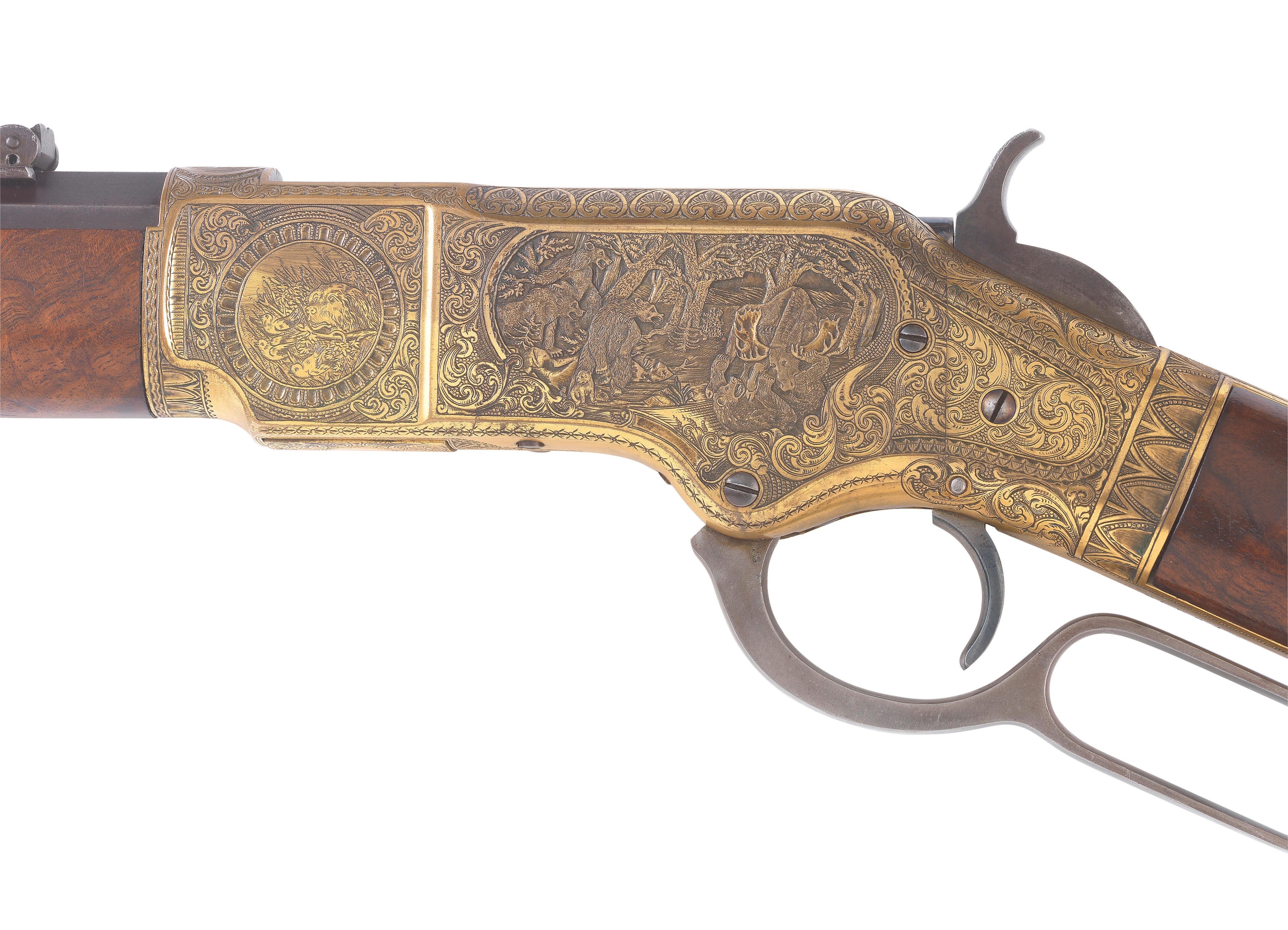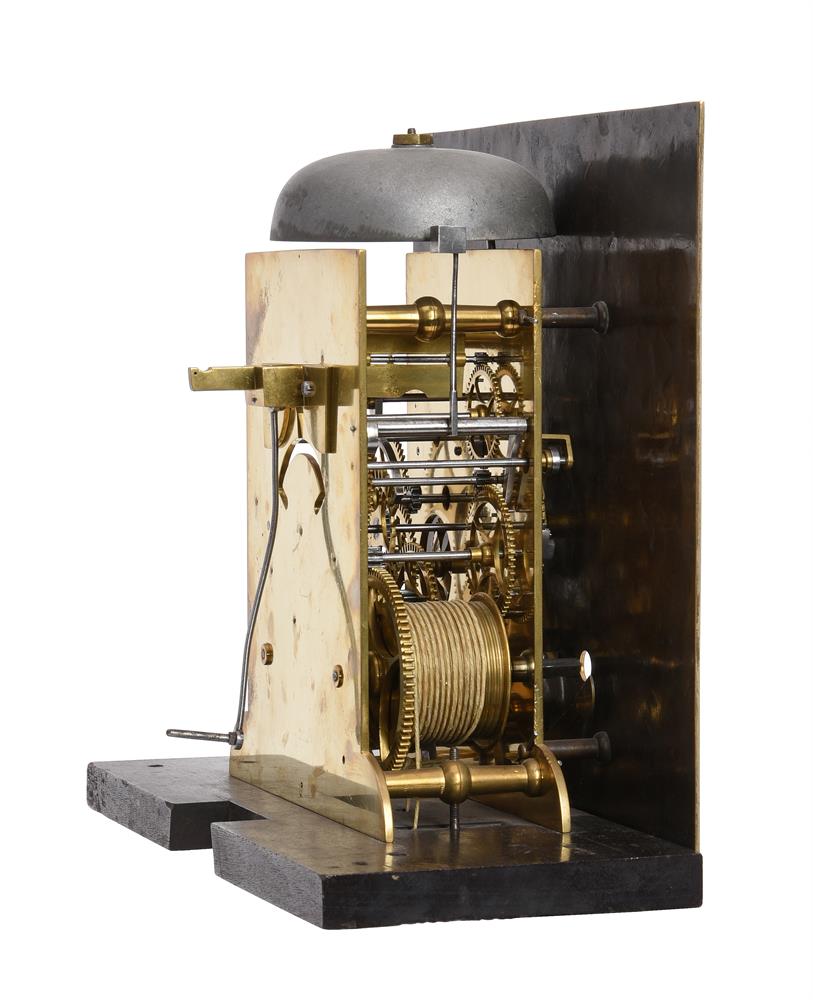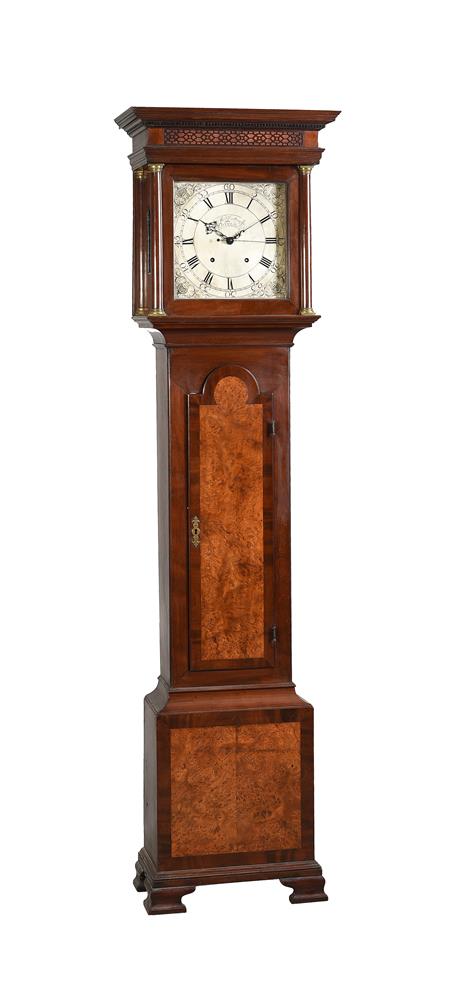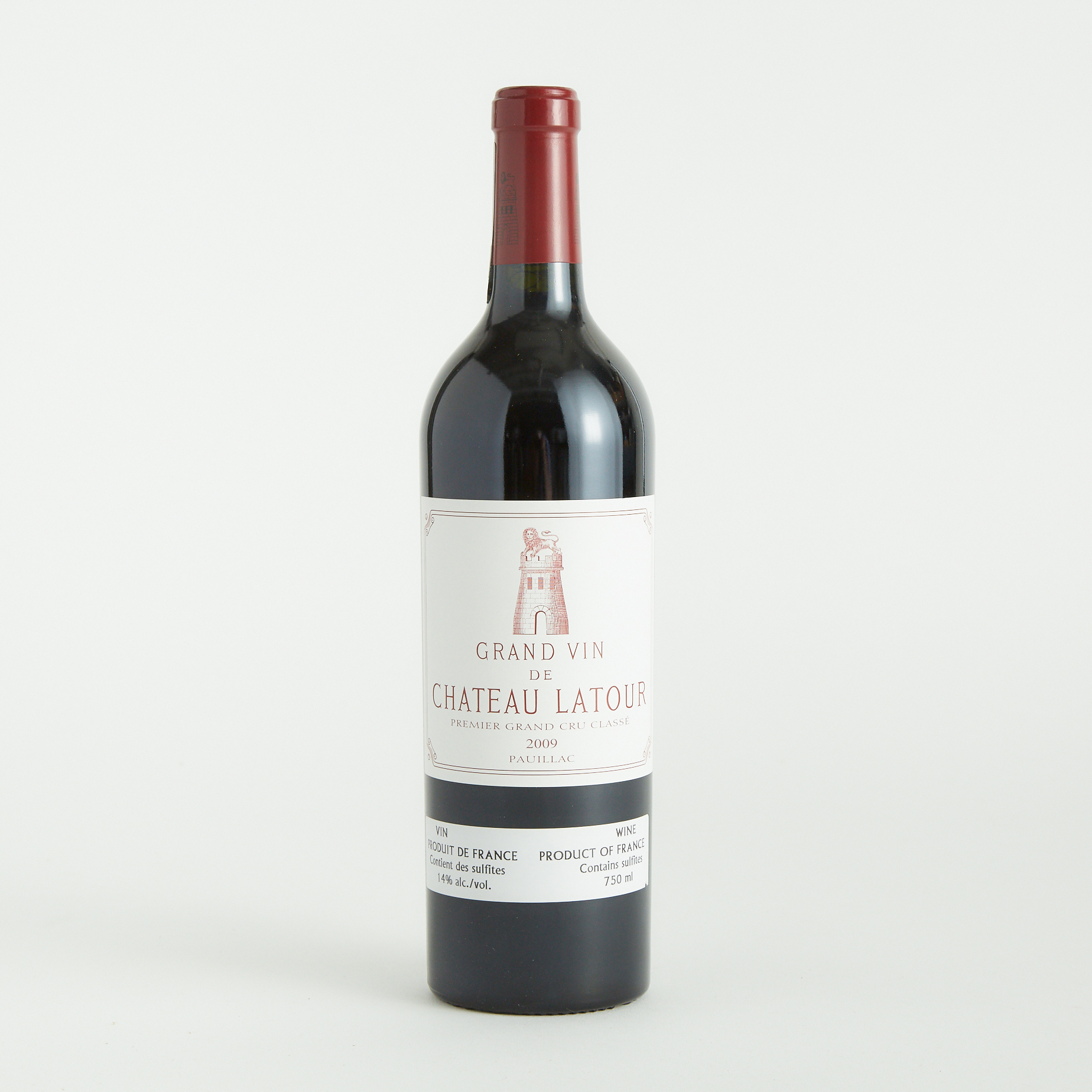A fine and potentially historically important architectural table timepiece of three-month duration with silent-pull quarter repeat Robert Seignior, London, circa 1680 and later The substantial seven finned and latched pillar single fusee movement with plates measuring 10 by 7 inches enclosing a spring barrel of approximately 4 inches in diameter driving a five-wheel train with verge escapement regulated by short bob pendulum, the silent-pull quarter repeat train of the type first used by Joseph Knibb fitted to the top left hand corner of the movement and powered by a large curved leaf spring mounted on the backplate, sounding the quarters on a graduated pair of small bells followed by the hours on a single larger bell on demand only, now with a 10 inch square gilt brass dial with unusual sculpted silvered brass hinged lambrequin inscribed Robert Seignior, London revealing the single winding hole behind to the rose engraved and finely matted centre, within narrow silvered Roman numeral chapter ring with stylised trident half hour markers and Arabic five minutes within the outer minute track, with finely pierced and sculpted steel hands and crisply cast gilt winged cherub head spandrels, in a gilt brass ebony veneered case reconstructed using period elements with fine large gilt flambeau urn cast brass finial to the plinth-centred open arch pediment over crisply moulded entablature and Corinthian three-quarter columns with gilt multi-piece capitals and bases applied to the glazed front door, the sides veneered with rectangular panels and the rear with conforming entablature and three quarter columns flanking panel veneered door set within the frame of the case, the base with projecting plinths for the columns at the corners over crisply moulded shallow skirt, 59cm (23.25ins) high excluding finial; 68cm (26.75ins) high overall. Robert Seignio(u)r is recorded in Loomes, Brian The Early CLOCKMAKERS of Great Britain as apprenticed to John Nicasius gaining his Freedom of the Clockmaker s Company in 1667. He worked in Exchange Alley and was often at loggerheads with the Clockmaker s Company who called him to account for contemptible words he had used to and about Thomas Claxton, the Master. He was also fined 20 shillings in October 1671 for calling the Clockmakers a company of cheating knaves . In August 1674 Robert Seignior was appointed the King s Clock and Watchmaker without fee until the death or surrender of office by Edward East presumably to ensure succession of the role in the event of East`s demise. This appointment however was never formally fulfilled as East outlived Seignior who died in 1686; his premises at Exchange alley was subsequently taken-on by Daniel Quare Due to Seignior not being able to formally fulfil his appointment as Royal clockmaker there is no mention of any specific Royal commissions except for one which is discussed in Jagger, Cedric ROYAL CLOCKS on page 31. In his text Jagger highlights an entry dated 9 th December 1682 in a manuscript of a Schedule of Receipts and Payments by Henry Guy Esq.., for the Secret services of His late Majesty King Charles the Second : To Robert Seignior, For a clock bought of him and sett up in the Trea ry Chambers, for the use of the Commissioners of His said Maj ties Trea ry…..£20. This being Seigniors only recorded Royal commission would have no doubt resulted in him producing something special. Indeed with the Treasury historically dividing yearly activity into quarters then what would be more appropriate than having a clock which you only had to wind at the end of each quarter? With this question in mind then it may be appropriate to speculate that the movement of the current lot could possibly be from this long Commission. When the current lot was discovered abroad around fifteen years ago it sported an altered dial signed Robert Seignior, London . Examination of the trains and plates indicated that the timepiece was commensurate with early example
A fine and potentially historically important architectural table timepiece of three-month duration with silent-pull quarter repeat Robert Seignior, London, circa 1680 and later The substantial seven finned and latched pillar single fusee movement with plates measuring 10 by 7 inches enclosing a spring barrel of approximately 4 inches in diameter driving a five-wheel train with verge escapement regulated by short bob pendulum, the silent-pull quarter repeat train of the type first used by Joseph Knibb fitted to the top left hand corner of the movement and powered by a large curved leaf spring mounted on the backplate, sounding the quarters on a graduated pair of small bells followed by the hours on a single larger bell on demand only, now with a 10 inch square gilt brass dial with unusual sculpted silvered brass hinged lambrequin inscribed Robert Seignior, London revealing the single winding hole behind to the rose engraved and finely matted centre, within narrow silvered Roman numeral chapter ring with stylised trident half hour markers and Arabic five minutes within the outer minute track, with finely pierced and sculpted steel hands and crisply cast gilt winged cherub head spandrels, in a gilt brass ebony veneered case reconstructed using period elements with fine large gilt flambeau urn cast brass finial to the plinth-centred open arch pediment over crisply moulded entablature and Corinthian three-quarter columns with gilt multi-piece capitals and bases applied to the glazed front door, the sides veneered with rectangular panels and the rear with conforming entablature and three quarter columns flanking panel veneered door set within the frame of the case, the base with projecting plinths for the columns at the corners over crisply moulded shallow skirt, 59cm (23.25ins) high excluding finial; 68cm (26.75ins) high overall. Robert Seignio(u)r is recorded in Loomes, Brian The Early CLOCKMAKERS of Great Britain as apprenticed to John Nicasius gaining his Freedom of the Clockmaker s Company in 1667. He worked in Exchange Alley and was often at loggerheads with the Clockmaker s Company who called him to account for contemptible words he had used to and about Thomas Claxton, the Master. He was also fined 20 shillings in October 1671 for calling the Clockmakers a company of cheating knaves . In August 1674 Robert Seignior was appointed the King s Clock and Watchmaker without fee until the death or surrender of office by Edward East presumably to ensure succession of the role in the event of East`s demise. This appointment however was never formally fulfilled as East outlived Seignior who died in 1686; his premises at Exchange alley was subsequently taken-on by Daniel Quare Due to Seignior not being able to formally fulfil his appointment as Royal clockmaker there is no mention of any specific Royal commissions except for one which is discussed in Jagger, Cedric ROYAL CLOCKS on page 31. In his text Jagger highlights an entry dated 9 th December 1682 in a manuscript of a Schedule of Receipts and Payments by Henry Guy Esq.., for the Secret services of His late Majesty King Charles the Second : To Robert Seignior, For a clock bought of him and sett up in the Trea ry Chambers, for the use of the Commissioners of His said Maj ties Trea ry…..£20. This being Seigniors only recorded Royal commission would have no doubt resulted in him producing something special. Indeed with the Treasury historically dividing yearly activity into quarters then what would be more appropriate than having a clock which you only had to wind at the end of each quarter? With this question in mind then it may be appropriate to speculate that the movement of the current lot could possibly be from this long Commission. When the current lot was discovered abroad around fifteen years ago it sported an altered dial signed Robert Seignior, London . Examination of the trains and plates indicated that the timepiece was commensurate with early example











.jpg)



Try LotSearch and its premium features for 7 days - without any costs!
Be notified automatically about new items in upcoming auctions.
Create an alert